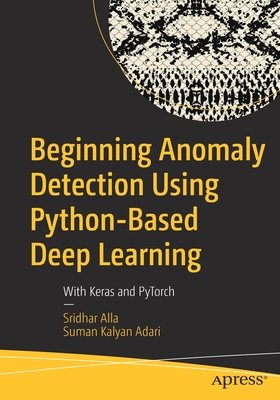Productive and Efficient Data Science with Python: Best Practices Guide to Implementing Aiops
暫譯: 高效且富有成效的數據科學與 Python:實施 Aiops 的最佳實踐指南
Sarkar, Tirthajyoti
相關主題
商品描述
Chapter 2: Better Programming Principles for Efficient Data ScienceChapter Goal: Help readers grasp the idea of efficient programming techniques and how they can be applied to a typical data science task flow.No of pages - 15Subtopics- The concept of time and space complexity, Big-O notation- Why complexity matters for data science- Examples of inefficient programming in data science tasks- What you can do instead- Measuring code execution timing
Chapter 3: How to Use Python Data Science Packages more ProductivelyChapter Goal: Illustrate handful of tricks and techniques to use the most well-known Python data science packages - Numpy, Pandas, Matplotlib, Seaborn, Scipy - more productively.No of pages - 20Subtopics- Why Numpy is faster than regular Python code and how much- Using Numpy efficiently- Using Pandas productively- Matplotlib and Seaborn code for and productive EDA- Using SciPy for common data science tasks
Chapter 4: Writing Machine Learning Code More ProductivelyChapter Goal: Teach the reader about writing efficient and modular machine learning code for productive data science pipeline with hands-on examples using Scikit-learn.No of pages - 15Subtopics- Why modular code for machine learning and deep learning- Scikit-learn tools and techniques- Systematic evaluation of Scikit-learn ML algorithms in automated fashion- Decision boundary visualization with custom function- Hyperparameter search in Scikit-learn
Chapter 5: Modular and Productive Deep Learning CodeChapter Goal: Teach the reader about mixing modular programming style in deep learning code with hands-on examples using Keras/TensorFlow.No of pages - 25Subtopics- Why modular code and object-oriented style for deep learning- Wrapper functions with Keras for faster deep learning experimentations- A single function to streamline image classification task flow- Visualize activation functions of neural networks- Custom callback functions in Keras and their utilities- Using Scikit-learn wrapper for hyperparameter search in Keras
Chapter 6: Build Your Own Machine Learning Estimator/PackageChapter Goal: Illustrate how to build a new Python machine learning module/package from scratch.No of pages - 15Subtopics- Why write your own ML package/module?- A simple example vs. a data scientist's example- A good, old Linear Regression estimator - with a twist- How do you start building?- Add utility functions- Do more with object-oriented approach
Chapter 7: Some Cool Utility PackagesChapter Goal: Introduce the readers to the idea of executing data science tasks efficiently by going beyond traditional stack and utilizing exciting, new libraries.No of pages - 20Subtopics- The great Python
商品描述(中文翻譯)
第1章:什麼是高效且生產力強的資料科學?
章節目標:向讀者介紹如何高效且更具生產力地執行資料科學任務,並說明日常工作中可能遇到的陷阱。
頁數:10
子主題:
- 典型的資料科學流程
- 資料科學中低效編程的簡短範例
- 一些需要避免的陷阱
- 效率與生產力並行
- 生產性資料科學流程的工具與技術概述
- 生產性資料科學所需的技能與態度
第2章:提高資料科學效率的編程原則
章節目標:幫助讀者掌握高效編程技術的概念,以及如何將其應用於典型的資料科學任務流程。
頁數:15
子主題:
- 時間與空間複雜度的概念,Big-O 表示法
- 為什麼複雜度對資料科學很重要
- 資料科學任務中低效編程的範例
- 你可以採取的替代方案
- 測量程式碼執行時間
第3章:如何更高效地使用 Python 資料科學套件
章節目標:說明一些技巧與技術,以更高效地使用最知名的 Python 資料科學套件 - Numpy、Pandas、Matplotlib、Seaborn、Scipy。
頁數:20
子主題:
- 為什麼 Numpy 比一般 Python 代碼更快,以及快多少
- 高效使用 Numpy
- 生產性地使用 Pandas
- Matplotlib 和 Seaborn 的代碼以進行高效的探索性資料分析(EDA)
- 使用 SciPy 處理常見的資料科學任務
第4章:更高效地編寫機器學習代碼
章節目標:教導讀者如何編寫高效且模組化的機器學習代碼,以便在生產性資料科學流程中使用,並提供使用 Scikit-learn 的實作範例。
頁數:15
子主題:
- 為什麼機器學習和深度學習需要模組化代碼
- Scikit-learn 的工具與技術
- 系統性地自動評估 Scikit-learn 的機器學習演算法
- 使用自定義函數進行決策邊界可視化
- 在 Scikit-learn 中進行超參數搜尋
第5章:模組化且高效的深度學習代碼
章節目標:教導讀者如何在深度學習代碼中混合模組化編程風格,並提供使用 Keras/TensorFlow 的實作範例。
頁數:25
子主題:
- 為什麼深度學習需要模組化代碼和物件導向風格
- 使用 Keras 的包裝函數以加速深度學習實驗
- 一個簡單的函數來簡化圖像分類任務流程
- 可視化神經網絡的激活函數
- Keras 中的自定義回調函數及其用途
- 在 Keras 中使用 Scikit-learn 包裝器進行超參數搜尋
第6章:建立自己的機器學習估計器/套件
章節目標:說明如何從零開始建立一個新的 Python 機器學習模組/套件。
頁數:15
子主題:
- 為什麼要編寫自己的機器學習套件/模組?
- 簡單範例與資料科學家的範例
- 一個經典的線性回歸估計器 - 帶有變化
- 如何開始建立?
- 添加實用函數
- 使用物件導向方法做更多事情
第7章:一些酷炫的實用套件
章節目標:向讀者介紹如何通過超越傳統堆疊並利用令人興奮的新庫來高效執行資料科學任務的概念。
頁數:20
子主題:
- 優秀的 Python
作者簡介
He has published data science books, and regularly contributes highly cited AI/ML-related articles on top platforms such as KDNuggets and Towards Data Science. Tirthajyoti has developed multiple open-source software packages in the field of statistical modeling and data analytics. He has 5 US patents and more than thirty technical publications in international journals and conferences.
He conducts regular workshops and participates in expert panels on various AI/ML topics and contributes to the broader data science community in numerous ways. Tirthajyoti holds a Ph.D. from the University of Illinois and a B.Tech degree from the Indian Institute of Technology, Kharagpur.
作者簡介(中文翻譯)
Tirthajyoti Sarkar 博士居住在舊金山灣區,擔任 Adapdix Corp. 的數據科學與解決方案工程經理,負責設計人工智慧 (Artificial Intelligence) 和機器學習 (Machine Learning) 解決方案,應用於基於邊緣計算的系統,推動工業 4.0 和智慧製造革命,涵蓋多個行業。在此之前,他在半導體技術領域擁有超過十年的經驗,專注於電力電子的最佳技術開發。
他已出版數據科學書籍,並定期在 KDNuggets 和 Towards Data Science 等頂尖平台上發表高引用率的 AI/ML 相關文章。Tirthajyoti 開發了多個開源軟體包,專注於統計建模和數據分析。他擁有 5 項美國專利,以及超過三十篇在國際期刊和會議上發表的技術論文。
他定期舉辦工作坊,並參與各種 AI/ML 主題的專家小組,並以多種方式為更廣泛的數據科學社群做出貢獻。Tirthajyoti 擁有伊利諾伊大學的博士學位,以及印度理工學院卡拉格普爾分校的工學學士學位。













